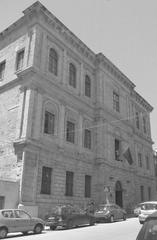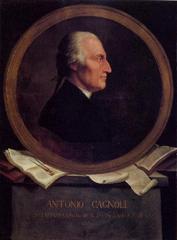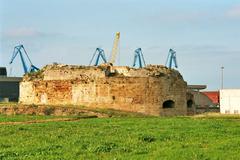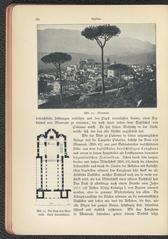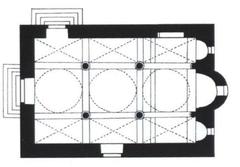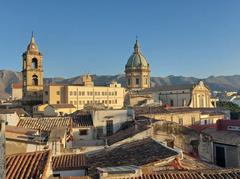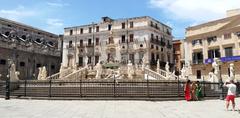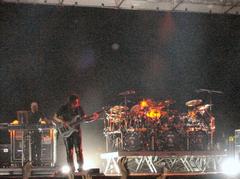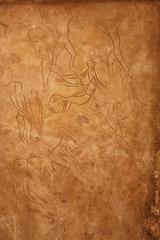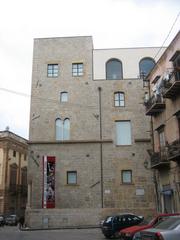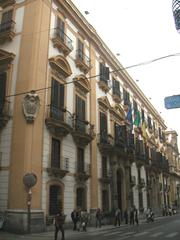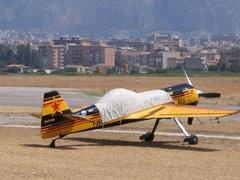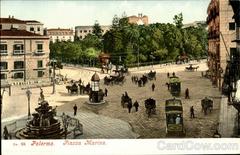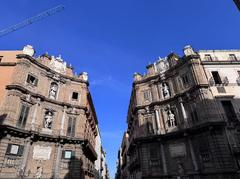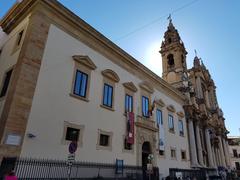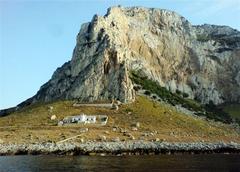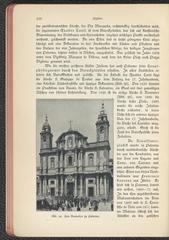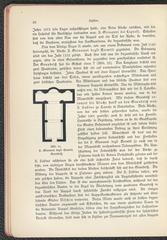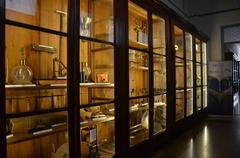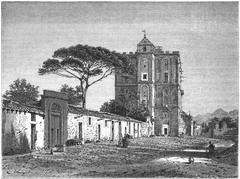
Comprehensive Guide to Visiting Palermo, Metropolitan City of Palermo, Italy
Date: 13/08/2024
Captivating Introduction
Welcome to Palermo, where ancient history mingles with modern-day vibrancy, creating an intoxicating blend that’s as rich and layered as a perfectly crafted cannoli. Imagine a city that has seen the rise and fall of empires, from the Phoenicians to the Romans, Arabs, Normans, and beyond. Nestled on the sun-drenched shores of Sicily, Palermo isn’t just a destination—it’s a journey through nearly 3,000 years of captivating history and culture (Wikipedia).
Palermo’s story begins in the Mesolithic period, around 8000 BC, with the Sicani people and the Phoenicians eventually making their mark in the 8th century BC. The city’s strategic location made it a coveted prize for various empires, each leaving indelible imprints on its cultural fabric. Fast forward to the Arab and Norman periods, where the city flourished as a melting pot of architectural marvels and intellectual advancements (Italy Heaven).
Picture this: walking through bustling markets like Ballarò and Vucciria, with the scent of fresh seafood and aromatic spices wafting through the air, or standing in awe before the Palermo Cathedral, a stunning mosaic of Norman, Moorish, Gothic, and Baroque styles (Capture the Atlas). From the grandeur of the Norman Palace to the eerie fascination of the Capuchin Catacombs, every corner of Palermo tells a story, waiting for you to uncover.
Whether you’re a history buff, a foodie, or simply an adventurous traveler, Palermo offers something for everyone. Ready to dive into the heart of this enigmatic city? Let’s embark on a journey that promises to be as unforgettable as Palermo itself.
Table of Contents
- Historical Overview
- Cultural Significance
- Top Attractions in Palermo, Metropolitan City of Palermo, Italy
- Norman Palace (Palazzo dei Normanni)
- Palermo Cathedral
- Quattro Canti
- Capuchin Catacombs
- Mondello Beach
- Piazza Pretoria
- Zisa Castle
- Vucciria and Ballarò Markets
- Orto Botanico di Palermo
- Cathedral of Monreale
- Teatro Massimo
- Monte Pellegrino
- Monte Gallo
- Stanze del Genio Museum
- Traditional Palermitan Festivals
- Practical Tips for Visitors
- Palermo: Your Next Adventure Awaits
Historical Overview of Palermo
Early History and Antiquity
Imagine a city where ancient Phoenician traders, Norman knights, and Arab scholars once roamed—welcome to Palermo, Sicily’s captivating capital. Palermo’s history dates back to at least the Mesolithic period, around 8000 BC, as evidenced by cave drawings found at Addaura (Wikipedia). The original inhabitants were the Sicani people, who, according to Thucydides, arrived from the Iberian Peninsula. By the 8th century BC, the Phoenicians established a settlement on Palermo’s natural harbor, naming it Ziz, which means ‘flower’ (Wikipedia). This settlement became one of the three main Phoenician colonies in Sicily, alongside Motya and Soluntum.
In 734 BC, the city was founded by the Phoenicians as Sis. It later became a possession of Carthage and was known as Panormos by the Greeks, meaning ‘all-port’ (Wikipedia). The Carthaginians used this name on their coins after the 5th century BC. As Panormus, the town became part of the Roman Republic and Empire for over a thousand years.
Arab and Norman Rule
From 831 to 1072, Palermo was under Arab rule as part of the Emirate of Sicily. During this period, the city was known as Balarm and became the capital of Sicily for the first time (Wikipedia). The Arab influence is still evident in Palermo’s architecture, culture, and cuisine. The Normans conquered Palermo in 1072, and it became the capital of the Kingdom of Sicily in 1130. This kingdom lasted until 1816 (Wikipedia).
Medieval and Renaissance Periods
During the Middle Ages, Palermo was one of Europe’s leading cities. It was a vibrant center of trade, culture, and learning. The city saw the construction of many significant buildings, including the Palermo Cathedral and the Norman Palace (Italy Heaven). The Norman rulers left a lasting legacy, blending Arab, Byzantine, and Norman architectural styles, which can be seen in the Arab-Norman Palermo and the Cathedral Churches of Cefalù and Monreale, a UNESCO World Heritage Site (Wikipedia).
Modern History
In 1860, Giuseppe Garibaldi and his ‘Redshirts’ landed in Sicily, aiming to free it from Bourbon rule. Palermo was a key battleground in this campaign, which ultimately led to Sicily joining the newly unified Kingdom of Italy in 1861 (We Are Palermo). This unification brought significant changes to Palermo, including new laws, infrastructure, and a shift towards modernity.
Palermo experienced various political eras, including Mussolini’s regime and the post-World War II Italian Republic era, starting in 1946. Throughout these changes, the city remained a key player in Italy’s dynamic national story (We Are Palermo).
Recent Developments
In the late 20th century, Palermo faced significant challenges, including issues related to organized crime. The city was often compared to a warzone due to the assassinations of politicians, judges, and informants in the 1990s (The Tour Guy). However, Palermo has made considerable progress in recent decades, pulling itself out of the doldrums and becoming a desired tourist destination once again.
Cultural Significance
Historical Layers and Multicultural Influences
Ready to embark on a journey through time? Let’s dive into Palermo, Sicily’s capital, where nearly 3,000 years of history create a fascinating cultural mosaic. Imagine a city where Phoenician traders, Greek colonists, Roman conquerors, Arab scholars, Norman knights, and Spanish rulers all left their mark. Palermo is like that one friend who blends every party’s best moments into one unforgettable evening.
The Greeks, calling the city Panormos or “All Port,” kicked things off around the 8th century BC (Wikipedia). They left behind more Doric temples than you’ll find in Greece itself. Don’t miss the Museo Archeologico Regionale, a treasure trove of Punic and Greek art (Lonely Planet).
Fast forward to the Arab-Norman period, a time of architectural magic when Islamic and Christian styles fused. The Norman Palace, a.k.a. the Royal Palace, and its Palatine Chapel are jaw-droppers with Byzantine, Islamic, and Latin elements (Capture the Atlas). The Zisa Palace is another gem, showcasing intricate mosaics and ceilings that whisper tales of old (Cultured Voyages).
Architectural Marvels
Palermo’s skyline is a history lesson in stone. The Palermo Cathedral, which started as an Arab mosque, was jazzed up by Norman King Roger I in 1072. Its eclectic mix of Baroque and Arab-Norman architecture is like a visual time machine (Lonely Planet).
Just outside Palermo, the Monreale Cathedral is a must-see. Built by Norman King William II, its 12th-century Byzantine mosaics are pure eye candy. This UNESCO World Heritage Site is a testament to Palermo’s artistic flair (Cultured Voyages).
Vibrant Markets and Street Life
Palermo’s markets are like a sensory overload party. Ballarò and Vucciria markets pulse with a Middle Eastern vibe, offering a riot of colors, sounds, and smells. These are not just markets; they are cultural carnivals (Cultured Voyages).
Street food here is legendary. Think “pasta con le sarde” (pasta with sardines) and “involtini alla palermitana” (Palermo-style rolls). A food tour is a must to savor these culinary delights (Capture the Atlas).
Artistic and Cultural Institutions
Palermo boasts several cultural institutions that are worth your time. The Regional Archaeological Museum Antonio Salinas houses Greek and Punic artifacts that are true historical treasures (Capture the Atlas).
Teatro Massimo, Italy’s largest opera house, is another highlight. Built in the late 19th century, it’s a stunning example of Palermitan Stile Liberty architecture. Catch a performance here for an unforgettable experience (Wikipedia).
Religious and Spiritual Sites
Palermo’s religious sites are a reflection of its rich history. The Church of Santa Maria dell’Ammiraglio, or La Martorana, is a mix of Norman, Byzantine, and Baroque styles. Its mosaics are nothing short of spectacular (Capture the Atlas).
For a dash of the macabre, visit the Capuchin Catacombs. These underground burial sites house thousands of mummified bodies, offering a unique, if eerie, insight into Palermo’s past (Cultured Voyages).
Socio-Economic Contrasts
Palermo is a city of contrasts. Grand palaces stand beside crumbling buildings, a testament to its turbulent history. Despite socio-economic challenges, Palermo’s vibrant street life and buzzing cafes illustrate its enduring spirit (Cultured Voyages).
The city’s notorious Mafia history has also shaped its cultural landscape. Yet, Palermo is resilient, with grassroots movements and progressive leadership driving positive change (Cultured Voyages).
Visitor Tips
Planning a trip? Here are some tips:
- Guided Tours: Opt for a guided tour to soak in Palermo’s rich history. Try the Palermo Original Street Food Walking Tour or the No Mafia Walking Tour (Cultured Voyages).
- Accommodation: From luxury hotels like Porta di Castro Boutique Hotel to budget options like Mamamia al Teatro Biondo, Palermo has a range of places to stay (Cultured Voyages).
- Transport: Palermo’s international airport and maritime links connect it to the mainland, but local transportation can be tricky. Book train tickets or car rentals in advance (Wikipedia).
- Local Cuisine: Don’t miss dishes like “pasta alla Norma” and “falsomagro” (stuffed pork chops). A food tour can elevate your culinary experience (Capture the Atlas).
Palermo’s cultural significance is a rich tapestry woven from its diverse history. From architectural marvels and vibrant markets to artistic institutions and religious sites, this city offers a wealth of experiences. Dive into Palermo’s multicultural heritage and uncover its unique charm and enduring spirit.
Discover the Magic of Palermo: A Journey Through Time and Culture
Norman Palace (Palazzo dei Normanni)
Step into the grandeur of the Norman Palace, also known as the Royal Palace, where history whispers through every stone. This iconic edifice, now the seat of the Sicilian Parliament, boasts a fascinating blend of Arab-Norman-Byzantine and Baroque architectural styles. Marvel at the Palatine Chapel’s stunning mosaics and intricate wooden ceiling that transport you to a bygone era. Don’t just visit history—experience it. (source)
Palermo Cathedral
Prepare to be awe-struck by the Palermo Cathedral, a monumental showcase of Norman, Moorish, Gothic, and Baroque styles. As you wander through its hallowed halls, explore the crypt, ascend to the rooftop for breathtaking views, and uncover countless historical treasures. For 15 EUR, a full ticket grants access to the cathedral, museum, and rooftop—worth every cent for a journey through Palermo’s spiritual heart. (source)
Quattro Canti
Quattro Canti, or Piazza Vigliena, is Palermo’s beating heart. Imagine standing at the crossroads of history, where each corner of this octagonal square is adorned with a fountain and statues representing the four seasons, Spanish kings, and Palermo’s patron saints. This vibrant plaza is more than a meeting point—it’s a living, breathing tapestry of Palermo’s rich cultural legacy. (source)
Capuchin Catacombs
Dive into the macabre and mesmerizing world of the Capuchin Catacombs. Beneath the Capuchin Monastery lies a chilling yet fascinating array of mummified corpses, each telling silent tales of Palermo’s past. This eerie attraction offers a unique glimpse into historical burial practices and is a must-visit for those intrigued by the city’s darker side. (source)
Mondello Beach
Escape to the pristine shores of Mondello Beach, where the Mediterranean sun kisses the turquoise waves. Once a quaint fishing village, Mondello now exudes a sophisticated charm, offering a perfect seaside retreat. Hop on the 806 bus from the city center and let the gentle sea breeze and golden sands rejuvenate your soul. (source)
Piazza Pretoria
Known as the Square of Shame, Piazza Pretoria is a gem nestled among iconic buildings like the Palazzo Pretorio, Church of Santa Caterina, and Palazzo Bonocore. Its central fountain, with statues that seem to come alive, whispers tales of Palermo’s past splendor. Spend an afternoon here, soaking in the beauty and history that permeate this enchanting square. (source)
Zisa Castle
Unveil the opulence of Palermo’s rulers at Zisa Castle, a testament to the city’s Arab-Norman architectural prowess. The castle’s interiors, adorned with beautiful mosaics and intricate decorations, offer a captivating journey through Palermo’s regal past. Architecture enthusiasts will find this historical treasure a feast for the eyes. (source)
Vucciria and Ballarò Markets
Immerse yourself in the vibrant chaos of Vucciria and Ballarò markets, where the air is thick with the aroma of fresh seafood and traditional Sicilian pastries. These bustling markets are a sensory overload of colors, sounds, and flavors, offering an authentic taste of local life. Don’t just visit—dive in and savor Palermo’s culinary delights. (source)
Orto Botanico di Palermo
Find tranquility amidst nature at the Orto Botanico di Palermo, Italy’s largest botanical garden. Spanning 10 hectares, this serene haven features diverse plant collections, from tropical greenhouses to Mediterranean gardens. Let the rustling leaves and fragrant blooms provide a peaceful escape from the city’s hustle and bustle. (source)
Cathedral of Monreale
Just a short trip from Palermo lies the Cathedral of Monreale, a UNESCO World Heritage Site renowned for its mesmerizing mosaics and grand architecture. Explore its intricate interior and uncover the rich history that has made this cathedral a must-see landmark. For a deeper understanding, join a guided tour and let the stories of Monreale’s past captivate you. (source)
Teatro Massimo
Step into the grandeur of Teatro Massimo, Italy’s largest opera house. This neoclassical masterpiece offers not only architectural splendor but also a rich cultural experience. Take a guided tour, attend a captivating performance, and immerse yourself in the theater’s storied past. Perfect for music and theater enthusiasts alike. (source)
Monte Pellegrino
For nature lovers and adventure seekers, Monte Pellegrino is a must. This 600-meter-high mountain offers panoramic views of Palermo, its surrounding mountains, and the sea. Hike to the summit, visit the Sanctuary of Santa Rosalia, and let the stunning vistas take your breath away. (source)
Monte Gallo
Near Mondello Beach, Monte Gallo offers another spectacular viewpoint. Rising to 586 meters, this promontory provides breathtaking views of the Mediterranean coastline. Whether hiking or driving, the journey to the top promises serene natural beauty and unforgettable vistas. (source)
Stanze del Genio Museum
Hidden in the Kalsa district, the Stanze del Genio museum is a treasure trove of Sicilian and Campanian tiles dating from 1500 to 1900. This lesser-known gem offers an intimate look at the region’s artistic heritage, making it a must-visit for art and history aficionados. (source)
Traditional Palermitan Festivals
Palermo’s vibrant festivals bring the city to life with colors and sounds. Celebrate the Feast of Santa Rosalia on July 15th and experience the city’s…rich cultural heritage firsthand. These lively festivals offer a unique opportunity to immerse yourself in Palermitan traditions and revel in the festive atmosphere. (source)
Practical Tips for Visitors
- Transportation: Palermo’s public transportation includes buses, trams, and taxis but can be unreliable. Consider renting a car or using a hop-on-hop-off bus tour for convenience. (source)
- Accommodation: Palermo offers a range of accommodations, from luxury hotels to budget-friendly B&Bs. Top choices include Porta di Castro Boutique Hotel, PALAZZO SANTAMARINA Luxury Suite & Spa, and Family Affair Palermo. (source)
- Best Time to Visit: Spring and fall are the best times to visit Palermo, with mild weather and smaller crowds. The average temperature is around 69°F, making it a pleasant destination year-round. (source)
Palermo: Your Next Adventure Awaits
Ready to explore the wonders of Palermo? Download the Audiala tour guide app for beautifully crafted audio guides that bring the city’s history, culture, and architecture to life. Your adventure starts now!
Embark on a journey through Palermo, where every corner holds a story, and every experience is a memory waiting to be made.
Call to Action
As we conclude our journey through Palermo, it’s evident that this city is more than just a collection of historical sites and cultural landmarks—it’s a living, breathing testament to human resilience and ingenuity. From the ancient cave drawings of the Mesolithic period to the modern-day vibrancy that defines its streets, Palermo is a city that wears its history with pride (We Are Palermo).
Palermo’s rich tapestry is woven from diverse threads: the intellectual legacy of Arab scholars, the architectural brilliance of Norman knights, and the artistic flair of Byzantine craftsmen. This blend of influences has created a unique cultural mosaic that continues to captivate and inspire visitors (Lonely Planet). Whether you’re exploring the grand halls of the Norman Palace or savoring the local delicacies at bustling markets, every experience in Palermo adds a layer to your understanding of its multifaceted identity (Cultured Voyages).
Palermo’s story is far from over. With recent developments transforming it into a sought-after destination, the city invites you to be a part of its ongoing narrative. So, are you ready to uncover Palermo’s secrets and create your own memories? Download the Audiala tour guide app today and let expertly crafted audio guides lead you through the city’s wonders. Palermo awaits, and its stories are eager to be told (Wikipedia).
References
- Wikipedia, 2024 https://en.wikipedia.org/wiki/Palermo
- Italy Heaven, 2024 https://www.italyheaven.co.uk/sicily/palermo/
- Capture the Atlas, 2024 https://capturetheatlas.com/things-to-do-in-palermo/
- We Are Palermo, 2024 https://wearepalermo.com/history-of-palermo/
- Lonely Planet, 2024 https://www.lonelyplanet.com/articles/palermo-sicilys-multicultural-capital
- Cultured Voyages, 2024 https://culturedvoyages.com/3-days-in-palermo/

